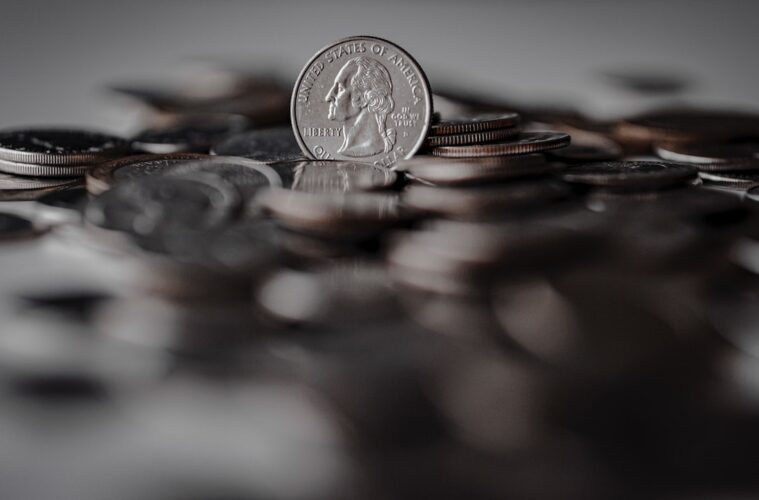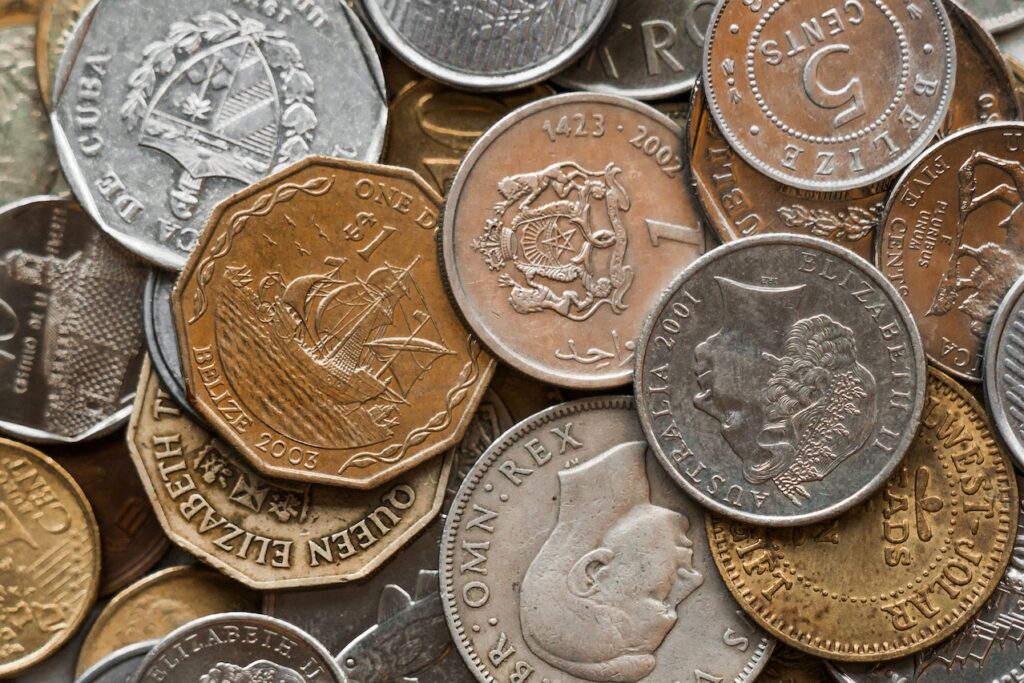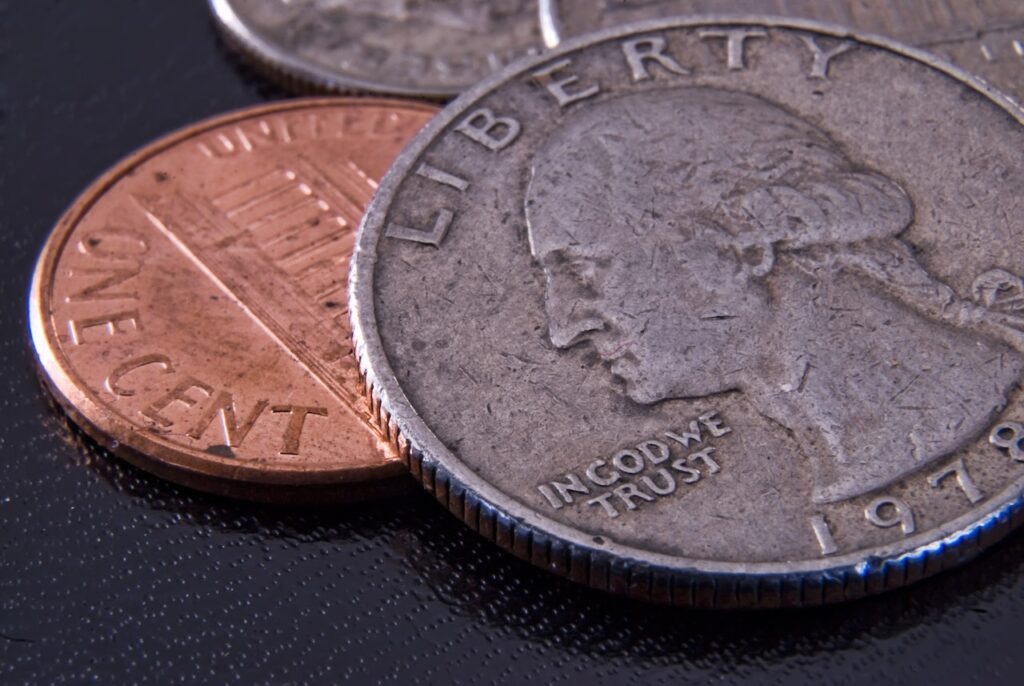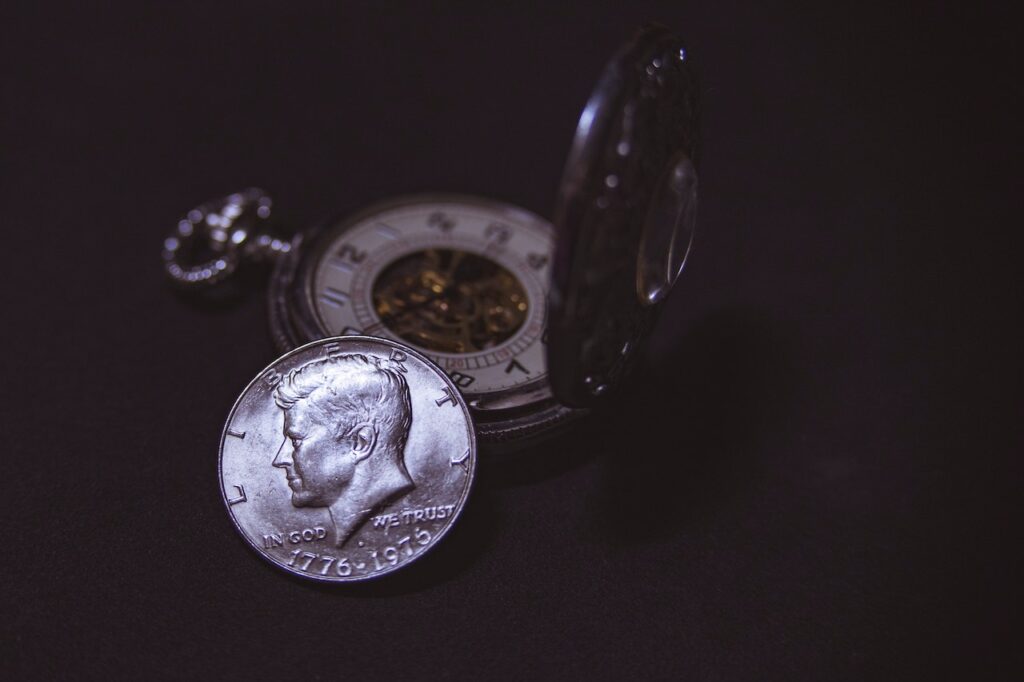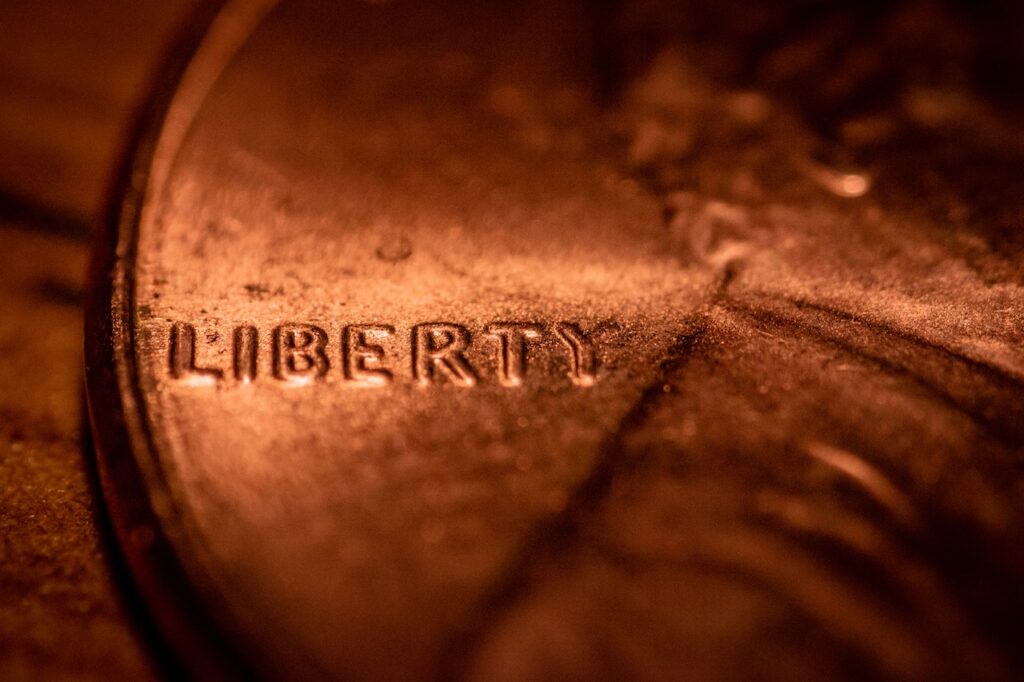The President on the Nickel
The United States nickel, a five-cent coin, has been in circulation since 1866. Since then, it has undergone a number of design changes, but one thing has remained constant: the portrait of a former president on the obverse side. Currently, the nickel features the profile of Thomas Jefferson, the third president of the United States. In this article, we will explore the history of the nickel, the design and sculpting process, and the significance of having a president’s image on a coin.
Brief History of the Nickel
The nickel was first introduced as a coin in 1866, replacing the half dime. At that time, the coin featured a shield on the obverse side and a large “V” on the reverse, representing the coin’s value of five cents. In 1883, the design was changed to feature the head of Liberty on the obverse side and a wreath on the reverse. It was not until 1938 that the nickel began featuring a president’s portrait on the obverse side, with Thomas Jefferson being the first to be honored in this way. Since then, other presidents have been featured on US coins, but the nickel remains the only coin to consistently feature a president’s portrait.
Key Takeaways
- The nickel has been in circulation since 1866 and has undergone several design changes.
- Thomas Jefferson was the first president to be featured on the nickel, and his portrait remains on the coin to this day.
- The nickel is the only US coin to consistently feature a president’s portrait on the obverse side.
The President on the Nickel
The United States five-cent coin, commonly known as the nickel, features a portrait of Thomas Jefferson, the third President of the United States. The coin was first introduced in 1866, replacing the half dime, and has undergone several design changes over the years.
The current design of the Jefferson nickel was introduced in 2006 and features a forward-facing portrait of Jefferson on the obverse side, along with the inscriptions “Liberty” and “In God We Trust.” The reverse side of the coin features an image of Jefferson’s home, Monticello, along with the inscriptions “United States of America” and “E Pluribus Unum.”
Thomas Jefferson was one of the most influential Founding Fathers of the United States, and is known for his role in drafting the Declaration of Independence, as well as his advocacy for individual rights and limited government. He served as President from 1801 to 1809, and was instrumental in the Louisiana Purchase, which doubled the size of the United States.
The Jefferson nickel has been a popular coin among collectors, and there have been several special editions and commemorative designs released over the years. In 2005, the United States Mint released a series of Westward Journey nickels, which featured designs commemorating the Lewis and Clark expedition and the Louisiana Purchase. The Jefferson nickel remains an important part of American coinage, and a lasting tribute to one of America’s most influential Presidents.
Brief History of the Nickel
Nickel is a hard, silvery-white metal that has been used in coinage since the mid-19th century. The United States first began minting five-cent coins, or nickels, in 1866. The first nickel to be produced was the Shield Nickel, which was minted from 1866 to 1883. It was followed by the Liberty Head Nickel, which was produced from 1883 to 1912.
In 1913, the Buffalo Nickel was introduced. It featured a design of a Native American on the obverse and a buffalo on the reverse. This nickel was produced until 1938, when it was replaced by the Jefferson Nickel. The Jefferson Nickel was first minted in 1938 and is still in production today.
In 2004 and 2005, the United States Mint produced the Westward Journey Nickel Series to commemorate the bicentennial of the Lewis and Clark expedition. These coins featured designs that depicted the journey of Lewis and Clark and the Native American cultures they encountered along the way.
The nickel has undergone several changes throughout its history. In 1866, the nickel was made of 75% copper and 25% nickel. In 1942, during World War II, the nickel was made of 56% copper, 35% silver, and 9% manganese. This was done to conserve nickel for the war effort. In 1946, the nickel returned to its original composition of 75% copper and 25% nickel.
Overall, the nickel has had a rich history in the United States and has undergone many changes over the years. From the Shield Nickel to the Westward Journey Nickel Series, the nickel has been an important part of American coinage for over 150 years.
Design and Sculpting
The design and sculpting of the President on the nickel coin have gone through several changes over the years. The original design was created by Felix Schlag in 1938 and featured a left-facing portrait of President Thomas Jefferson on the obverse side, with his home, Monticello, on the reverse side.
In 1909, Victor David Brenner created the design for the Lincoln cent, which featured a right-facing profile of President Abraham Lincoln on the obverse side. Brenner also designed the original reverse side of the nickel, which featured a depiction of a Roman temple. However, due to production issues, the design was changed to the image of Monticello in 1938.
In 2004, the nickel underwent a redesign with the obverse side featuring a left-facing portrait of President Jefferson, similar to the original design by Schlag. The reverse side features a new design by Jamie Franki, which depicts the Louisiana Purchase and the explorers Lewis and Clark.
The sculptors responsible for creating the designs of the nickel have included Augustus Saint-Gaudens, Gilroy Roberts, and Schlag. Saint-Gaudens was responsible for the design of the $20 gold coin, which features Lady Liberty on the obverse side. Roberts was responsible for creating the design of the Kennedy half-dollar coin, which features a left-facing portrait of President John F. Kennedy on the obverse side.
Overall, the design and sculpting of the President on the nickel coin have undergone several changes over the years, with various artists contributing to the creation of the designs.
US Mint and Coinage
The United States Mint, also known as the US Mint, is responsible for producing all of the coins and medals used in the United States. The Mint was established by the Coinage Act of 1792, which authorized the creation of a national mint to regulate coinage. The Mint operates under the supervision of the Director of the Mint, who is appointed by the President of the United States.
The US Mint is responsible for producing circulating coins, bullion coins, and commemorative coins. Circulating coins are the coins that are used in everyday transactions, while bullion coins are primarily purchased as investments. Commemorative coins are issued to honor notable people, events, or places.
The US Mint has several facilities across the country, including locations in Philadelphia, Denver, San Francisco, and West Point. Each facility is responsible for producing different types of coins and medals.
Eva Adams was the first woman to serve as the Director of the US Mint, holding the position from 1961 to 1969. During her tenure, she oversaw the production of the Kennedy half dollar and the transition from silver to copper-nickel clad coinage.
Overall, the US Mint plays a critical role in the production and regulation of coinage in the United States.
Other Presidents on US Coins
Apart from Thomas Jefferson, there are several other US presidents who have been featured on coins. Here are some of them:
- Abraham Lincoln: One of the most popular presidents in US history, Abraham Lincoln has been featured on the penny since 1909. The front of the penny features a portrait of Lincoln, while the back of the coin features the Lincoln Memorial.
- George Washington: The first US president, George Washington has been featured on the quarter since 1932. The front of the quarter features a portrait of Washington, while the back of the coin features a design that changes every few years.
- Franklin D. Roosevelt: The 32nd US president, Franklin D. Roosevelt has been featured on the dime since 1946. The front of the dime features a portrait of Roosevelt, while the back of the coin features a torch, an olive branch, and an oak branch.
- Theodore Roosevelt: One of the most popular presidents in US history, Theodore Roosevelt has been featured on the nickel since 1938. The front of the nickel features a portrait of Roosevelt, while the back of the coin features a design that changes every few years.
- John F. Kennedy: The 35th US president, John F. Kennedy has been featured on the half dollar since 1964. The front of the half dollar features a portrait of Kennedy, while the back of the coin features the presidential seal.
- Ronald Reagan: The 40th US president, Ronald Reagan has been featured on the dime since 2016. The front of the dime features a portrait of Roosevelt, while the back of the coin features a design that commemorates Reagan’s life and legacy.
- Dwight D. Eisenhower: The 34th US president, Dwight D. Eisenhower has been featured on the dollar coin since 1971. The front of the dollar coin features a portrait of Eisenhower, while the back of the coin features an eagle landing on the moon.
- Ulysses S. Grant: The 18th US president, Ulysses S. Grant has been featured on several US coins, including the $50 bill, the $500 bill, and the $1000 bill. However, these bills are no longer in circulation.
Overall, these presidents have all made significant contributions to US history, and their legacies continue to be celebrated through their appearances on US coins.
Materials Used in Coinage
Coins have been made from a variety of materials throughout history. The materials used in coinage have varied depending on the time period, the region, and the purpose of the coins.
In the United States, the most common metals used in coinage are copper, nickel, and zinc. The composition of coins has changed over time, with some coins being made of gold and silver in the past.
The penny, or one-cent coin, is made of copper-plated zinc. The dime, quarter, and half-dollar coins are made of a combination of copper and nickel, while the dollar coin is made of brass and copper.
In the past, the half-dollar and dollar coins were made of silver, but this practice was discontinued due to the rising cost of silver. The last half-dollar coins made of silver were minted in 1969, and the last dollar coins made of silver were minted in 1971.
Overall, the materials used in coinage are chosen for their durability, availability, and cost-effectiveness. While some coins may be made of precious metals like gold and silver, the majority of coins in circulation are made of more common metals like copper, nickel, and zinc.
Significant US Coinage Programs
The United States has a long history of producing significant coinage programs that commemorate important events, people, and places. These programs often feature unique designs and are highly sought after by collectors.
One of the most popular coinage programs in recent history is the 50 State Quarters Program, which ran from 1999 to 2008. During this program, the US Mint released a quarter for each of the 50 states, featuring unique designs that represented the state’s history and culture. This program was highly successful, with millions of people collecting the quarters and many businesses using them as promotional items.
Another significant coinage program was the Bicentennial Quarter Program, which was launched in 1975 to commemorate the 200th anniversary of the United States. The program featured a unique design on the reverse side of the quarter, with a colonial drummer and a torch encircled by 13 stars to represent the original 13 colonies. This program was also highly successful, with millions of people collecting the quarters as a memento of the bicentennial celebration.
Other notable coinage programs include the Presidential $1 Coin Program, which began in 2007 and features a series of coins honoring each US President, and the America the Beautiful Quarters Program, which began in 2010 and features designs that represent national parks and other significant sites across the United States.
Overall, these coinage programs have been highly successful in commemorating important events and people in US history, while also providing unique and collectible coins for collectors and the general public alike.
Evolution of US Currency
US currency has undergone several changes since its inception. The evolution of US currency has been influenced by several factors, including technological advancements, political and economic changes, and cultural shifts. This section provides an overview of the evolution of US currency.
The first US coins were minted in 1792, and they were made of gold, silver, and copper. The coins were designed to reflect the values and beliefs of the American people. Over time, the design of US coins has changed to reflect the changing values and beliefs of the American people. For example, the design of the nickel has changed several times over the years. The current design features a portrait of Thomas Jefferson, while the previous design featured a portrait of Monticello, Jefferson’s home.
In addition to US coins, paper money has also undergone several changes over the years. The first paper currency was issued by the Continental Congress in 1775. It was used to finance the American Revolution. Since then, paper currency has become an important part of the US economy. The design of paper currency has also changed over the years to reflect the changing values and beliefs of the American people. For example, the current design of the US dollar features a portrait of George Washington, while the previous design featured a portrait of Alexander Hamilton.
The evolution of US currency has also been influenced by political and economic changes. For example, during the Civil War, the federal government issued paper currency to finance the war effort. This was the first time that paper currency had been issued on a large scale in the United States. In addition, during the Great Depression, the federal government issued paper currency to stimulate the economy and provide relief to the American people.
In conclusion, the evolution of US currency has been influenced by several factors, including technological advancements, political and economic changes, and cultural shifts. The design of US coins and paper currency has changed over the years to reflect the changing values and beliefs of the American people.
Frequently Asked Questions
Who is on the nickel and dime?
The nickel features the portrait of Thomas Jefferson, the third President of the United States, on the obverse side. The reverse side of the nickel displays the Monticello building, Jefferson’s plantation home. The dime, on the other hand, features the portrait of Franklin D. Roosevelt, the 32nd President of the United States, on the obverse side. The reverse side of the dime showcases a torch, an olive branch, and an oak branch.
What president is on the nickel, dime, and quarter?
Thomas Jefferson is the president featured on the nickel, Franklin D. Roosevelt is on the dime, and George Washington, the first President of the United States, is on the quarter.
Why is Thomas Jefferson’s face on the nickel?
The decision to feature Thomas Jefferson on the nickel was made in 1938, to commemorate the 200th anniversary of his birth. Jefferson was selected for his contribution to the founding of the United States, his role in drafting the Declaration of Independence, and his advocacy for democracy and individual rights.
Do all nickels have mint marks?
Yes, all nickels have mint marks that indicate the location where it was minted. The mint mark can be found on the reverse side of the nickel, above the building of Monticello.
What is on the back of a nickel?
The reverse side of the nickel features the building of Monticello, which was the primary plantation of Thomas Jefferson. The building is surrounded by the words “E PLURIBUS UNUM” and “MONTICELLO.”
Who is on each coin and bill?
The United States currency features different historical figures on each coin and bill. For example, George Washington is on the one-dollar bill, Abraham Lincoln is on the five-dollar bill, and Alexander Hamilton is on the ten-dollar bill.

